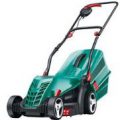If you need to know how to change the Lawnmower oil or how to tune up and maintain your Lawn mower, then take a look at these videos outlined below which will help you get these particular jobs completed.
Lawnmower Oils
There are generally two types of lawnmower oils namely 2-stroke oil and 4-stroke oil.
2-stroke oil
This type of oil is specifically designed for 2-stroke engines, which are commonly found in smaller lawnmowers, chainsaws, and other handheld power equipment. 2-stroke oil is pre-mixed with gasoline at a specific ratio, usually mentioned in the equipment's manual. It lubricates the engine, reduces friction, and helps cool the components. It's important to use the correct oil-to-gas ratio to ensure proper lubrication and prevent engine damage.
View also: Popular Petrol Lawnmowers
Lawnmower Oil Changing Video Tips
Video - How to Change Lawn Mower Oil
4-stroke oil
4-stroke oil is formulated for engines with a separate oil reservoir, where the oil is not mixed with gasoline. Most larger lawnmowers and outdoor power equipment use 4-stroke engines. This oil lubricates the engine, reduces wear and tear, and provides protection against heat build-up. 4-stroke oil is usually added directly to the oil reservoir and should be changed periodically as recommended by the manufacturer.
Viscosity
It's crucial to refer to the lawnmower's manual or consult with a professional to determine the correct type and viscosity of oil to use. Using the appropriate oil and following recommended maintenance procedures will help keep your lawnmower running smoothly and extend its lifespan.
View also: Popular Cordless Hedge Trimmers
Video - Lawn Mower Tune-Up and Maintenance
How to check the Oil Levels
To check the oil levels in a lawnmower, you can follow each of these simple steps…
1, Preparation - Make sure the lawnmower is on a flat, level surface and the engine is turned off. Allow the engine to cool down for a few minutes if it was recently in use.
2, Locate the oil fill cap/dipstick - Look for a cap or dipstick marked "Oil" or "Engine Oil." It is usually located on the side of the engine and may have a bright-coloured handle or cap for easy identification.
3, Remove the oil fill cap/dipstick - Unscrew the cap or pull out the dipstick to access the oil reservoir.
4, Wipe the dipstick clean - Use a clean cloth or paper towel to wipe off any residual oil from the dipstick.
5, Check the oil level - Insert the dipstick back into the oil reservoir but do not screw it in. Push it all the way in, then pull it out again.
6, Read the oil level - The dipstick has markings indicating the optimal oil level. There are usually two marks or a crosshatched area on the dipstick. The oil level should be between the minimum and maximum marks or within the crosshatched area. If the oil level is below the minimum mark, additional oil is required.
7, Add oil if necessary - If the oil level is low, add oil gradually to avoid overfilling. Use the recommended type and viscosity of oil specified in the lawnmower's manual.
8, Pour small amounts of oil - Wait for a few moments, and recheck the oil level until it reaches the proper range.
9, Reinstall the oil fill cap/dipstick - Once the oil level is correct, securely screw in the cap or reinsert the dipstick back into the oil reservoir.
Engine Lubrication
It's important to regularly check the oil levels in your lawnmower and maintain them within the recommended range. Proper oil levels ensure effective lubrication and cooling of the engine, promoting its longevity and efficient operation.
View also: Popular Ride on Tractor Mowers
How to Change Oil in Petrol Lawnmowers
To change the oil in a petrol lawnmower, you can follow these steps to get you through the process
1, Preparation - Ensure the lawnmower is on a flat, level surface and the engine is turned off. Allow the engine to cool down if it was recently in use.
2, Gather necessary materials - You will need a suitable container to collect and store the used oil, a wrench or socket set, a funnel, and the appropriate type and amount of new oil as specified in the lawnmower's manual.
3, Locate the oil drain plug - Look underneath the lawnmower for the oil drain plug. It is usually a bolt or plug near the base of the engine. You may need to refer to the lawnmower's manual for specific guidance.
4, Position the collection container - Place the collection container beneath the oil drain plug to catch the used oil.
5, Remove the oil drain plug - Using a wrench or socket set, carefully loosen and remove the oil drain plug. Be cautious as the oil may start to flow out immediately. Allow the used oil to drain completely into the collection container.
View also: Popular Cordless Lawnmowers
6, Replace the oil drain plug - Once the old oil has drained, clean the drain plug and the surrounding area. Carefully reinstall the oil drain plug, ensuring it is securely tightened but not over-tightened.
7, Locate the oil fill cap/dipstick - Locate the oil fill cap or dipstick, which is usually on the side of the engine. Remove the cap or pull out the dipstick to access the oil reservoir.
8, Pour in the new oil - Insert a funnel into the oil fill opening and carefully pour in the recommended amount of new oil. Refer to the lawnmower's manual for the correct oil type and capacity.
9, Check the oil level - After adding the new oil, insert the dipstick back into the oil reservoir but do not screw it in. Pull it out again and check the oil level. The oil level should be within the recommended range, typically indicated by markings on the dipstick.
10, Reinstall the oil fill cap/dipstick - Once the oil level is correct, securely screw in the cap or reinsert the dipstick back into the oil reservoir.
11, Dispose of the used oil responsibly - Properly dispose of the used oil by taking it to a recycling centre or an authorized collection point in your area. Do not pour it down the drain or into the trash.
View also: Popular Weed killers here
Community Feedback
Have you any helpful tips yourself when it comes to changing oils in Lawnmowers? If so, please educate the wider community by leaving a comment in the comment box section provided below – so that others can learn also…





Recent Comments